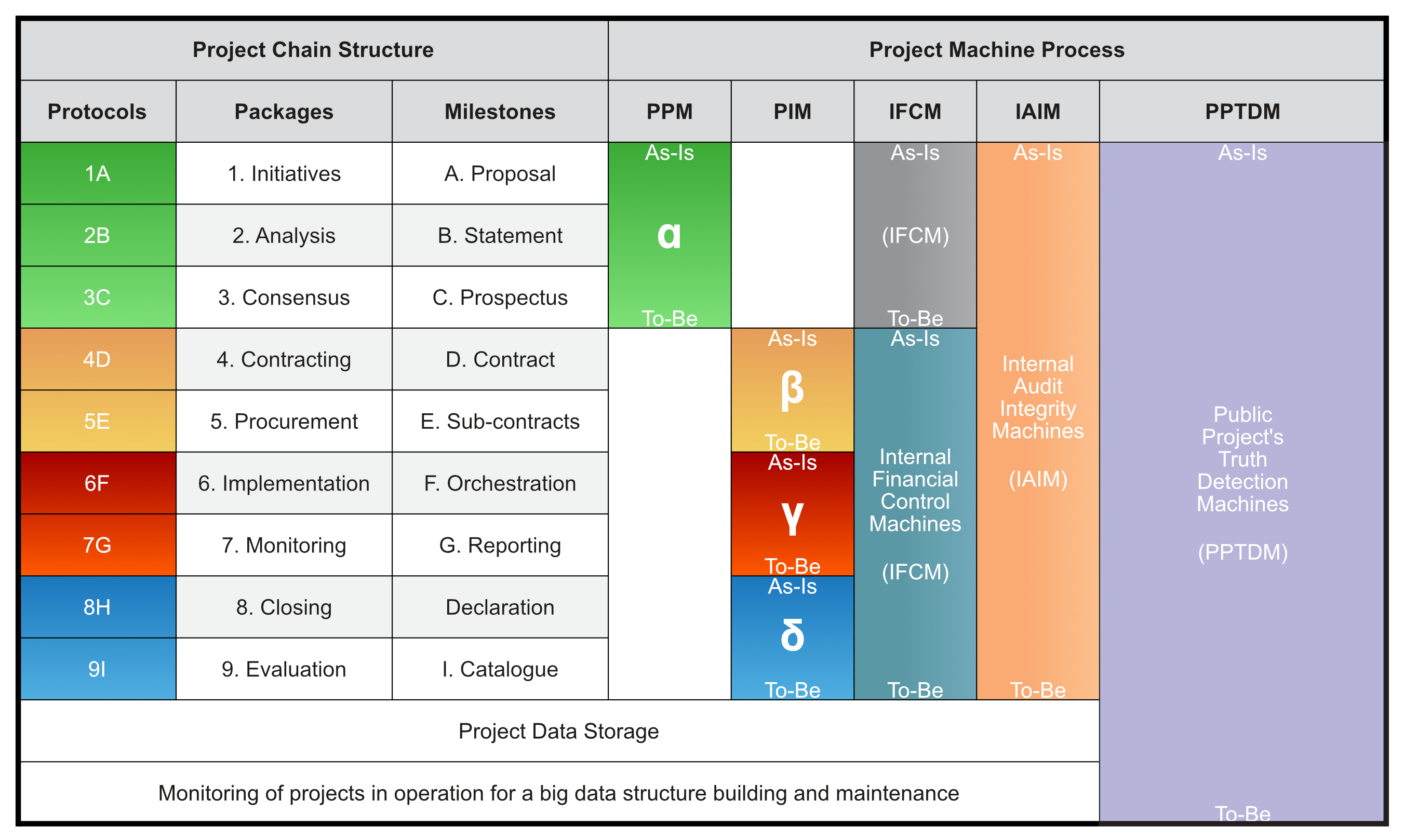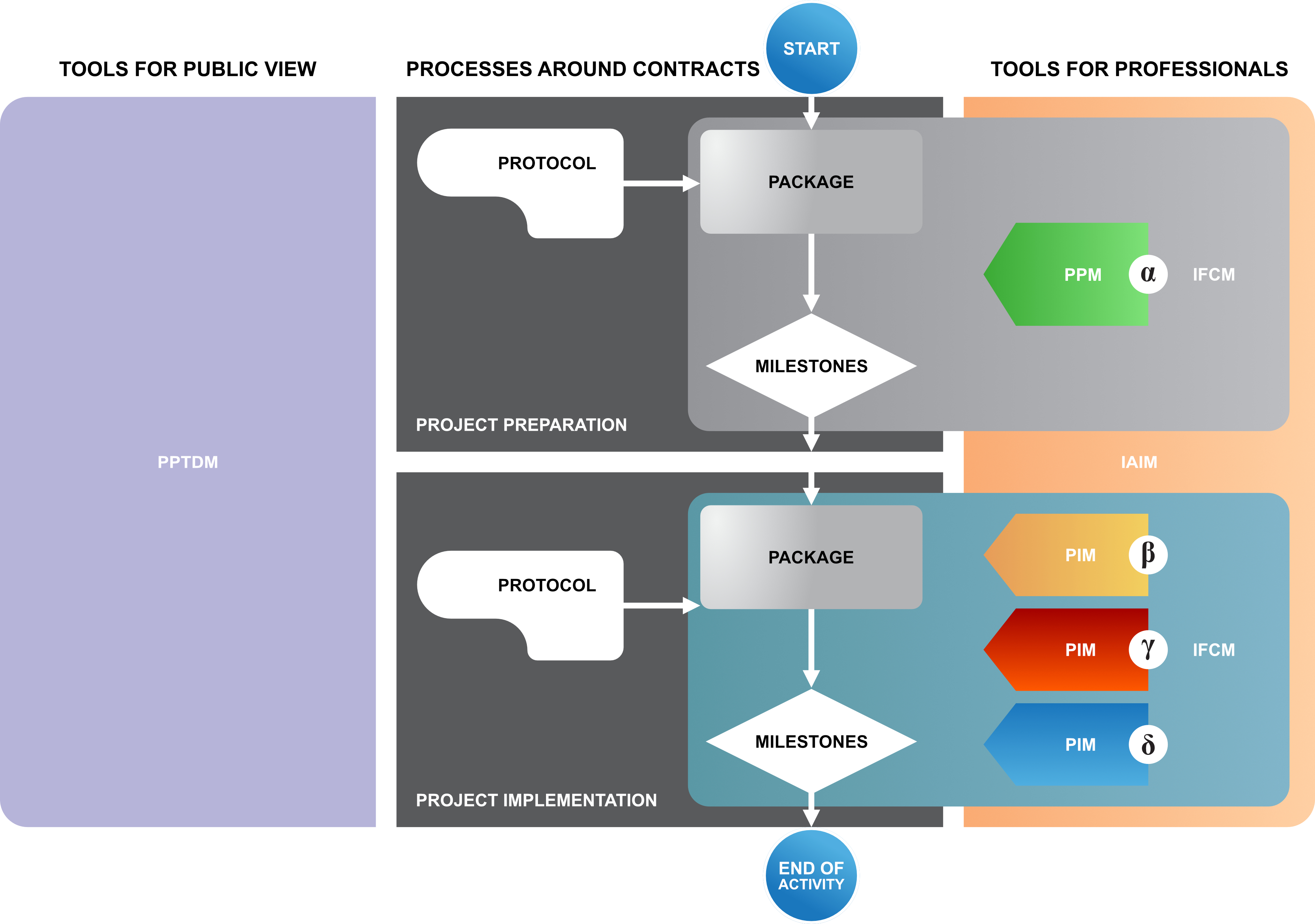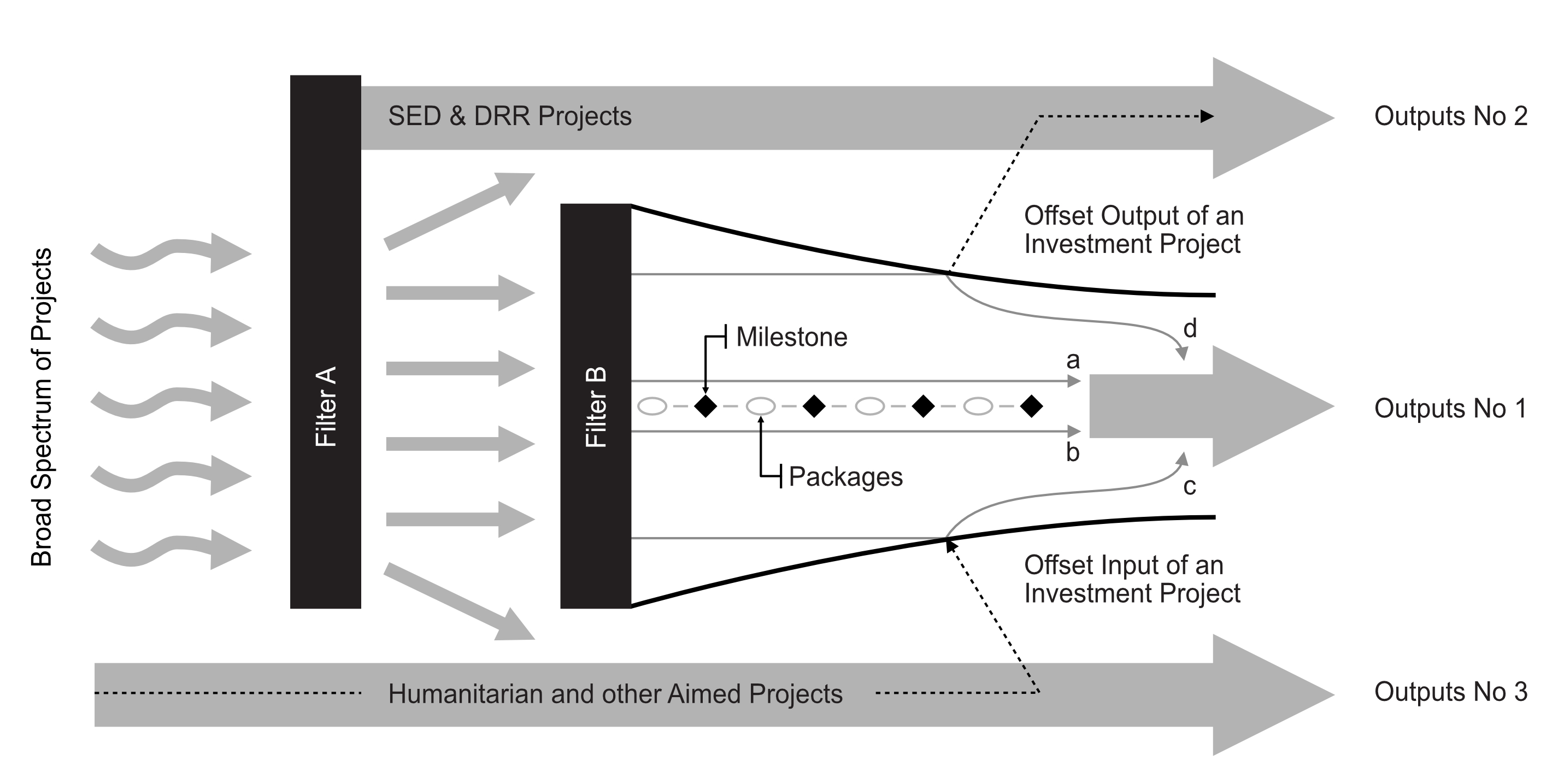D1. SPC Utility
The SPC Utility is a base unit of project preparation and implementation operations on a territory defined as a standard province with about one million inhabitants on any part (region, state) worldwide. SPC Drivers of the SPC Utility should reflect the goals of the Master Plan and other documents accepted by the Central Government and relevant Local Government Units to the territory of a specific province's objectives.
The most important partner of a new SPC Utility but not the last, is a consortium of IFI (International Financial Institutions) and local banks, existing or newly created in the province or surrounding territory. According to Addis Ababa Action Agenda (AAAA) for 2015–2030, the role of the Multilateral Development Banks (MDBs) is supposed to attract less private finance than the total resources they commit. The key to this is Blended Finance, a helpful tool still waiting on data deficit reduction in investment, mainly in low-income countries.
Data deficit will be the critical influencer in solving the Capacity problems (see Table Ex.1, Matrix of the SPC Drivers). Capacity is the fourth Sector (Finance, Capital, Investment, and Banking) and represents a specific approach to data transparency needed for Blanding Financing. Proving this potential of the SPC Concept is one of the critical matters of both Chapters D and E finishing. The aim is to present the principle of goals of vital functions and business operations and guarantee debt services. It uncovers options for maintaining long-lasting influences on the social and economic balance in any specific in situ of the SPC Utility on a province territory. Please remember the goal is to initiate the growth of a global network of individual, distributed operations of SPC Utilities worldwide.
There is an optimistic assumption that such new rules of the Multilateral Development Banks (MDBs), Blended Finance, and Data Deficit in the local and global economy, the environment, and the safety of life will find their positions. Local initiatives, LGUs goals, and central government interests will create new industries and line up themselves to reach the needed success on the paths to GDT and GHA goals. The most critical in this way are regulation and management rules.
Therefore, the consortium IFI and local banks will have the authority to decide on the SPC Utility lockdown in any emergency (see Chapter D). This measure is proposed to protect financial commitments and capital value in situ (in a province) until a new SPC Utility operation is opened in better times (after political disturbances, local wars, and any local catastrophe that calms down).
The SPC Concept is about distributed operations of individual units in a growing network of SPC Utility units and each local set of SPC Drivers. At the stage of the start-up activities (e.g., the first one or after a reopening after any lockdown), the SPC Utility organization structure is proposed in an understanding dimension between high-and low-income provinces. The model of high-income regions or areas (provinces) brings experiences with new technologies. Its disadvantage is growing legal smog (decreasing predictability, transparency, and clarity).
The opposite model of low-income sections offers a natural demand (needs) for simple and certified technologies in poor administration and data management but in satisfactory conditions, safety, and fatal situations. It forms a constant "embryonal" market environment, readable for any scaling for digital needs. Compared to existing smashed segments of computing services for the "Big Data Complex," built on many derivates without needed knowledge and the feedback link to real needs and behavior (see Chapter C, Figures C6b and Figure C6c.1 / Figure C6c.2). It is one of the arguments why the scalability of the present economy and human behavior stages should start closer to the root than many tree branches of the human development trajectory.
The web reader can follow more information related to Chapter D via the set of Figures commented on below (the final numbering of Figures will get the logical order when the Chapter is finished).
The principle of the SPC Utility organization scheme is in Figure 5.3.1b. In Genesis and Reference sections (G10) in the E-book "Infrastructure and SPC Concept," pages 251–268.
Both Figures bellow present an entry into the project management procedures of the upcoming SPC Utility. The methods are summarized in Figures Dx.1 and Figure Dx.2. The reader will see detail after opening the link below (see more): the Project Chain Structure (Protocols, Packages, and Milestones) and proposed Project Machine Processes (PPM, PIM, IFCM, IAIM, and PPTDM).
Figure Dx.1 presents the project data structure and machine processes in project packages and milestones in the article "Blockchain, Smart Contract, and Global Digital Transformation" in the International Journal of Computers, Vision, and machine learning (IJCVML), Volume 1, Number 4, 2022. The structure of project packages and milestones content are repeated below. Both themes of Figures Dx.1 and Dx.2 are now in development, and they are one of the main tasks of Chapter D and Chapter E:
Figure Dx.1 Project data structure and project machine processes (protocols, packages, and milestones)
Packages content:
Initiative – the first opportunity or reason that exists.
Analysis – work done to develop a reliable estimate of the project's timing and cost.
Consensus – stability of inputs coming from stakeholders.
Contracting – an agreement between two or more parties to accomplish a project's scope by a schedule and approved financial sources.
Procurement – finding and agreeing to terms and acquiring goods, services, or works from an external source, often via a tendering or competitive bidding process.
Implementation – transforming the project preparation data package into the implementation stage's steps.
Monitoring – execution of a project (goods, services, and works) on the building site.
Closing – project completion and its financial close.
Evaluation – in three positions: ex-ante (in stages of project preparation), interim (during implementation stages), and ex-post (when is a project or its core segment completed).
Milestones content:
Proposal – a document (a roadmap) that plans the project's steps, so everyone involved understands what it is about.
Statement – a formal document that defines the scope of the work involved for a vendor and clarifies deliverables, costs, and timeline.
Prospectus – a legal document that balances the opinion on the project scope and the accessibility of financial sources for project preparation and implementation phases.
Contract – is a critical document that includes terms and conditions (project scope, time, and costs) to be followed by the involved parties.
Sub-contracts – a set of documents reflecting the project procurement results in a specific supply chain environment.
Procedures – a detailed set of steps to be taken throughout the project, monitored, and regularly noted.
Protocols – reflects on the project life cycle (preparation and implementation stages) and represents rules for all procedures on an operational level.
Declaration – is an announcement to project stakeholders that the project achieved the goal; final acceptance is issued, and the project is closed.
Catalog – It is about project data storage and operations linked to the results of ex-ante, interim, and ex-post evaluations.
Figure Dx.2 presents the project preparation and implementation chain principle, explains processes around the contract, introduces links among tools for professional auditing, and indicates a tool for the public view into the project life cycle processes and their auditing and evaluations. Abbreviations on the Figure are explained here below.
Figure Dx.2 Project preparation and implementation chain principle
PPM – Project Preparation Machine: a tool for managers of project preparation stages that works with Blockchain and Smart Contract support. This tool unlocks access to packs and milestones. It is designed for the workflow phase of project preparation.
PIM – Project Implementation Machine: a tool for managers of project implementation stages with a link to PPM. It supports the entire project cycle according to the set packages and milestones. It performs Smart Contract functions primarily through data on financial flows (e.g., via Internal Financial Control as the first principle of the successful project).
IFCM – Internal Financial Control Machine: a tool for managers involved in internal financial control operations (e.g., the credibility, correctness, and completeness of financial flows in the project). Step by step, according to the project preparation and the construction plan, the machine monitors (checks) the consumption of planned funds and the growth of the value of the work on the construction site.
IAIM – Internal Audit Integrity Machine: a tool for project managers to monitor the project cycle. The goal is to work with indicators of the project's effectiveness, efficiency, and economy and to create and collect data for the catalog.
PPTDM – Public Project's Truth Detector (Machines): a new idea of a tool design for project managers and their communication with the public (with all stakeholders, media, and any other interested party).
PPM, PIM, IFCM, and IAIM tools should only be open to professionals; (the team of project managers, invited colleagues, certified experts, auditors, police, judges, and international court experts). With this relief, the PPTDM tool should provide managers and other persons fully involved in the project operations with a higher concentration on the project and its environment.
The public has the right to be informed but not about detail. Any fault or fraud is not the subject of public discussions but only for police and judge's bodies. Only after gaining results (partial or complex) is a broad space for media open for any policy speculations.
The link and connection of milestones and packages in the project process are approximated by Figure Dx.3. Figure is about the Pipeline principle of the project flows via two filters (this Figure is taken from the 1. Website 5PforRES (G13, version 2012-2016).
Filter A represents the Social and Economic studies nationally, and filter B represents packages of the SPC Utility projects flow in a province via a pipeline structure of milestones. Project outputs No 1, 2, and 3 (on this Figure) represent a growing potential of information, data, and algorithm values valid (needed) for global and local market operations in a new, more profound, deeper digital environment.
Figure Dx.3 Filters A and B for the SED, DRR, and HA projects and offset options
The public has the right to be informed but not about detail. Any fault or fraud is not the subject of public discussions but only for police and judge's bodies. Only after gaining results (partial or complex) is a broad space for media open for any policy speculations.
The following figures indicate the relationship between the goals of construction and the opportunities for standardization uncovered via scaling operation for a new project paradigm, e.g., Figure C9g.1 opens the view of a new type of construction in situ for a low-income province's needs. The working Brand OMU (Open Modular Unit) is a new proposed innovation. OMU can help both react to the conditions of refugees (to build more sophisticated temporary camps) and the needs of slums (to offer a new concept of occupancy of unused or devastated space as compensation for poor living conditions).
As a result, we can think, step by step, about a new genuine concept of the low-income provinces' new settlements (in peri-urban and rural areas) for most of the present low-incomes world population. The first thinking is based on the author's practices in the kits assembly system development. More see Resources, Examples till 2000, CV, the Research Building Institute in Prague, the research works of the system ROKO.
Figures C9h.1 demonstrate a principle of access to the administration of such specific multifunctional building works. It is the typical access to the breakdown structure of construction works for all items of packages of administration processes in every day (local standard) construction activities in a specific construction environment and its problems.
For the management of buildings of the "Building Structures" type in the world, we find essential standard features of the procedures and steps of their preparation and implementation. However, there are exceptions. On the side of low-income regions, it is primarily about "Slums development".
These are real-life examples. It is situated at banks of "water - brooks, rivers, lakes" or other inland places worldwide, creating specific unhealthy (dangerous) standards of life. It is about forming spontaneous (unwonted) urbanism, the spread of which is made possible by present incidents and flows of refugees. It is a sad and not thoughtful stabilization of the Human in the Great triad (GT) environment.
Figures C9i.1 adds a view of the building model of those constructions that are under threat (e.g., earthquakes, floods, landslides, wind, fire, and other resistances) with the potential to find a solution for the resettlement of their tenants, owners, and squatters, etc. For example, we can develop and implement apps via the proposed model OMU (Figure W.15) and rebuild social and technical resistance to existing and actual problems. Banks of "water – brooks, rivers, lakes" are the best places for the healthy and sustainable life of the Human in the GT.
It is about social and economic synergy in resettling the local population for a safe and more environmentally standard of life. How to spin out such synergy lies in the polarity of policymakers and mothers of children on the local level. More formally, it is concerning the capacity and moral power of the Target group (TG) and Final Beneficiaries (FG) defined by this Webbook.


